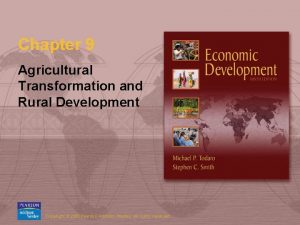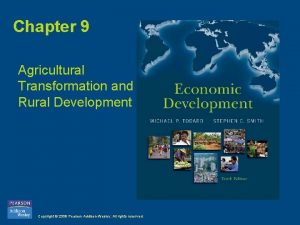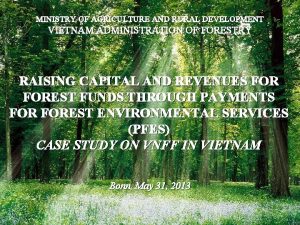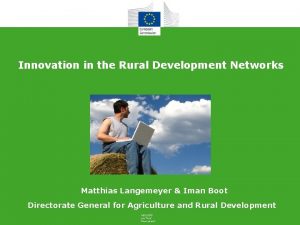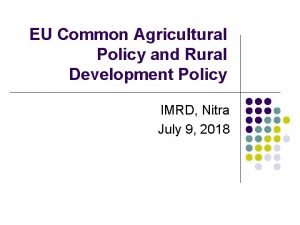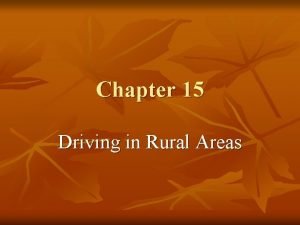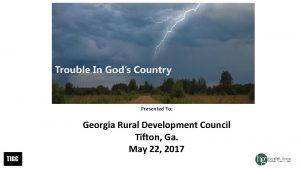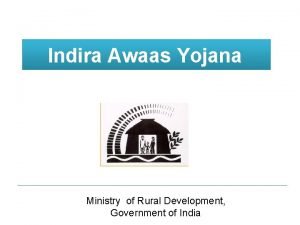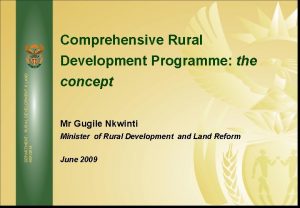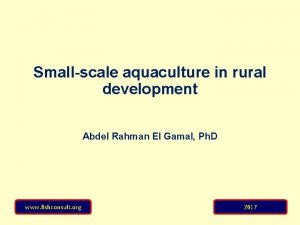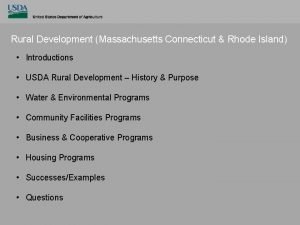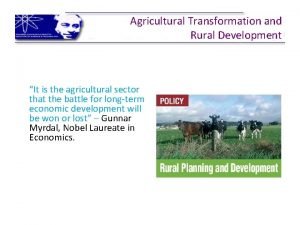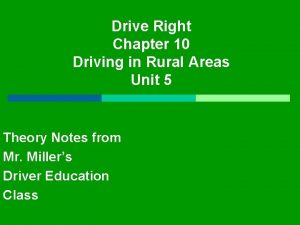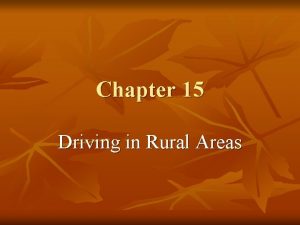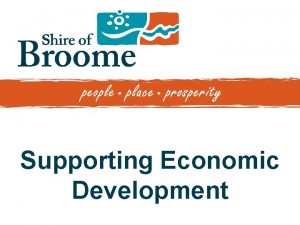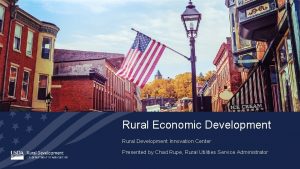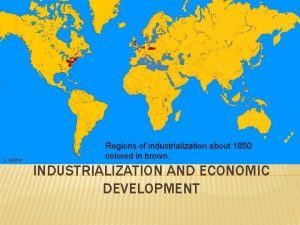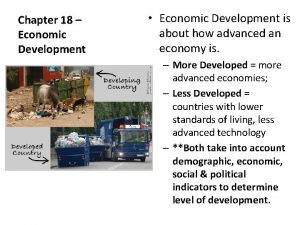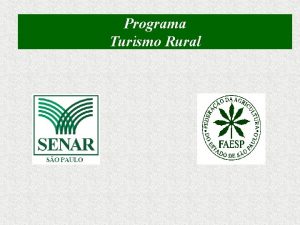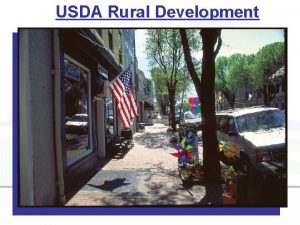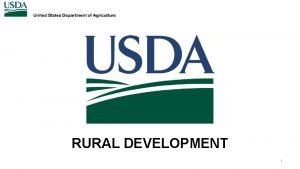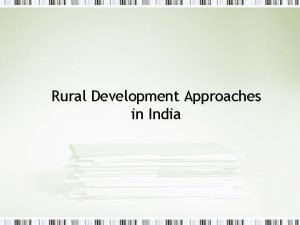Chapter 17 Rural Economic Development Rural Development Rural



















- Slides: 19

Chapter 17: Rural Economic Development Rural Development

Rural Development-Efforts aimed at improving the quality of life in rural America (farm & nonfarm) Economic development-Efforts aimed at increasing per-capita income levels Community development Public policy at the local level is frequently concerned with improving incomes and the quality of life for rural residents

Facets of Rural Development Rural industrialization brings (hopefully) higher paying jobs to rural residents Public service delivery improved education fire, police protection libraries, recreational facilities hospitals, medical services other needed services

Rural Development issues: What does the community need to do in order to attract new industry? Consequences of population growth? undesirable Who pays for upgraded public services? taxpayer revolt How do you deal with outsiders? Brain drain from rural communities

Population growth: generally greatest in the counties near a metro area Urban employment and income with rural lifestyle Industry interested in locating near (but not necessarily in) an urban center How can public services be efficiently delivered in a nonmetro county detached from but near an urban center?

Some Rural Counties are Experiencing Population Growth: Others are Losing People (percent change, 2010 -2012)

Metro, Non-Metro and Micropolitan Counties, 2013

Annual Population Growth Rates for Metro and Non-Metro Areas, 2000 -2010 Between 2000 and 2010, metro areas Far outdistanced Non-metro areas In population growth. This has changed Since 2010

The Rate of Population Loss in Rural Areas to Metro Areas is Slowing By 2011, about 51 million people lived in rural areas

Rural communities located far from urban centers must rely on agriculture as a primary source of income Businesses in these towns are frequently somehow linked to agriculture USDA "farming dependent" counties For these counties, their fate is linked to the economic conditions facing agriculture Boom & Bust Energy-related industry Coal & Oil Forestry & Timber

Education in rural areas: Expensive on a per pupil basis as the cost of teachers spread over relatively few students Attitudes toward education in rural areas vary considerably from state to state and region to region Limited course offerings compared with urban schools Loss of most talented students to high paying jobs in urban areas

Medical care in rural areas: Frequently limited in availability family physician in rural community in private practice declining Physicians like high-paying jobs in urban clinics Care of elderly may be a problem in rural areas MEDICAL CLINIC

Housing in rural areas: Deemed substandard if it lacks indoor plumbing Under 28 million rural housing units total a million substandard units--59% 1959 less than 5% now A number of rural counties still have significant numbers of substandard homes….

Rural Housing Units Lacking Complete Plumbing by County, 2010 (Percent) Source: Housing Assistance Council “Taking Stock” Report

Persistent Poverty Counties, Metro and Non-Metro

Government transfer payments to individuals as a percent of total county personal income, 2011

Rural areas do not get their proportionate share of federal aid Urban congressmen support programs for urban poor Rural congressmen are concerned with government assistance for farmers Rural poor are often ignored Renewed efforts are underway to redirect federal funds to rural areas

Rural Development Strategies: 1. More economic assistance to rural residents other than farmers (i. e. food stamps) 2. Additional state and federal aid to rural schools to account for externalities and spillovers 3. Strategic plans for quality medical service delivery irrespective of where you live 4. Programs designed to further improve housing in rural areas 5. Assistance to local governments in community improvements

6. Redirection of federal projects toward remote rural areas 7. Assistance in developing plans for attracting new industry Fewer than 5 million people live on farms but 59 million people live in non-farm rural areas Public policy will be increasingly directed toward meeting the needs of non-farm rural residents.
 Economic growth vs economic development
Economic growth vs economic development Difference between economic growth and economic development
Difference between economic growth and economic development Chapter 9 agricultural transformation and rural development
Chapter 9 agricultural transformation and rural development Chapter 9 agricultural transformation and rural development
Chapter 9 agricultural transformation and rural development Lesson 2 our economic choices
Lesson 2 our economic choices Ministry of agriculture and rural development cameroon
Ministry of agriculture and rural development cameroon Ecotourim
Ecotourim Matthias langemeyer
Matthias langemeyer Rural development
Rural development Rural areas have of development drivers ed
Rural areas have of development drivers ed Usda rural development tifton ga
Usda rural development tifton ga Ministry of rural development
Ministry of rural development Ministry of rural development
Ministry of rural development Comprehensive rural development programme
Comprehensive rural development programme Kaavil farmfresh spices
Kaavil farmfresh spices What is zila parishad
What is zila parishad Usda approved towns in massachusetts
Usda approved towns in massachusetts Agricultural transformation and rural development
Agricultural transformation and rural development Chapter 10 driving in rural areas worksheet answers
Chapter 10 driving in rural areas worksheet answers Chapter 15 driving in rural areas
Chapter 15 driving in rural areas


